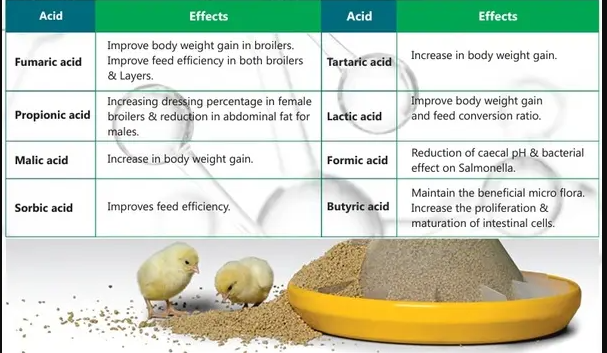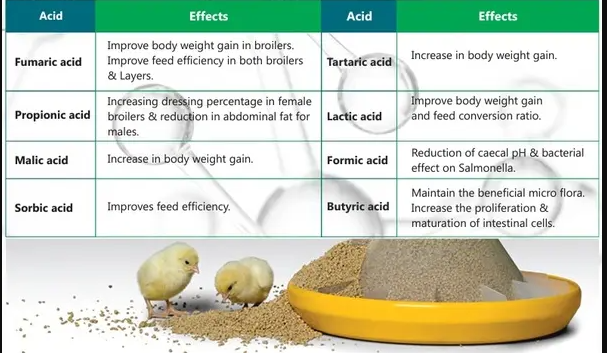Introduction
- Acidifiers are combination of organic acids. Organic acid is a chemical compound from the class of fatty acids that have a pH below 7
- Organic acids included in feeds in order to lower the pH of the feed, gut, & microbial cytoplasm thereby inhibiting the growth of pathogenic intestinal microflora.
Decreasing the gastric [stomach] pH:
Pathogenic bacteria [E.Coli, Salmonella, Streptococcus etc.] grow within the range of 6 to 8 pH. Their growth is inhibited when the pH falls below the range suitable for the growth.
In general, the more acidic the pH of the medium, the greater is the antibacterial activity. This is because acidic pH causes major damage to lipopolysaccharides of the outer membrane of gram negative bacteria. Acidic pH also inactivates essential enzymes at the cell surface of bacteria. At an alkaline pH, the organic acids of the acidifiers are present mostly in a dissociated form, whereas in the acidic pH they remain mostly un dissociated.
It in the undissociated form that they are able to enter into the bacteria, through cell membrane. This is because, by partitioning into membrane lipid bilayers, undissociated organic acids molecules interfere with the activity of membrane protein or enzymes. Thus, organic acid inhibit the growth of bacteria when concentration of the acid reaches a critical level.
Once inside the bacteria the more neutral environment within causes the organic acids to dissociate into H+ ions & anions. The acid anions disrupt and interfere with DNA and protein synthesis, causing bacterial death.


